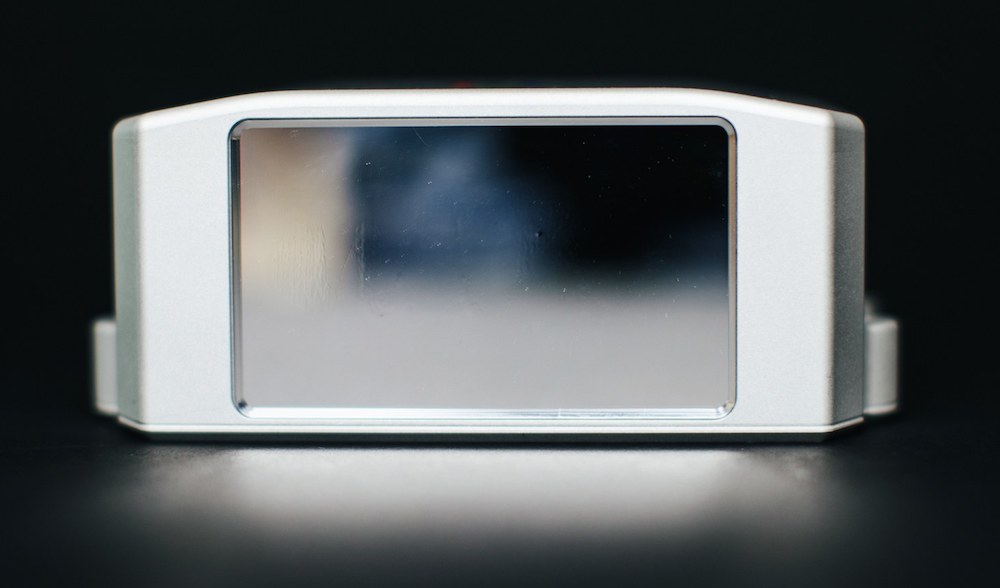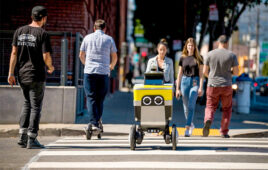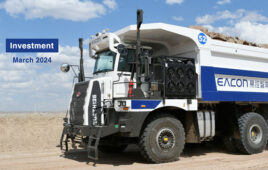
Luminar’s Iris LiDAR platform for series production vehicles. | Credit: Luminar
Palo Alto, Calif.-based Luminar raised $100 million in funding that will help it scale production of LiDAR sensors for autonomous vehicles. This raises Luminar’s total amount of funding raised to more than $250 million.
Luminar also unveiled a sensing and perception platform called Iris that has been in stealth development for the last three years. Luminar said Iris, which is a third of the size of the company’s previous LiDAR unit, is slated to launch commercially on production vehicles beginning in 2022. Each unit weighs about 2 pounds and can fit into a car’s bumper.
According to Luminar, Iris will cost under $1,000 per unit for production vehicles seeking Level 4 autonomy. A less sophisticated version of Iris will be available for driver assistance-type applications at a sub $500 pricing target for larger programs.
For the first time, Luminar is delivering a comprehensive hardware-software architecture for perception by combining its software products in sensor fusion, auto-calibration, tracking, object detection, classification and simulation.
“We’re at a stage where everyone in the industry is hacking together Frankenstein solutions with off-the-shelf parts for their R&D programs, but to successfully achieve series production autonomy, hardware and software have to be seamlessly developed and integrated in tandem,” said Austin Russell, Luminar’s chief executive officer. “This combined, turnkey solution for series production vehicles is key to democratizing autonomy in the industry, enabling every automaker to deliver on the promise of self-driving capabilities on their vehicles.”
Luminar hired Christoph Schroder to lead its 60-person software team. Schroder has been involved with autonomous vehicles since 2006. He joins Luminar from Daimler/Mercedes where he led the development of the self-driving software stack and overall autonomous robo-taxi program. He previously worked on the first applications of Level 3 and highway autonomy at Bosch.
Cutting LiDAR costs
LiDAR emits rapid laser signals that bounce back from obstacles they encounter. Once the signals bounce back, the sensor collects the amount of time it took for the signal to bounce back to determine the distance between where it is positioned and the obstacles ahead that it may encounter. LiDAR is limited by weather conditions.
Another major challenge for LiDAR makers has been the high production costs. This is just one of several reasons Tesla hasn’t adopted the technology. CEO Elon Musk said at Tesla’s Autonomy Day that “LiDAR is a fool’s errand. Anyone relying on LiDAR is doomed. Doomed! [They are] expensive sensors that are unnecessary. It’s like having a whole bunch of expensive appendices. Like, one appendix is bad, well now you have a whole bunch of them, it’s ridiculous, you’ll see.”
However, most companies developing autonomous vehicles say LiDAR is a crucial piece of the puzzle. Cost was such a problem for Waymo that in 2011 it began manufacturing its own LiDAR sensors. At the time, Waymo said it could lower the unit price from $75,000 for an off-the-shelf LIDAR sensor to just $7,500 with its own custom version. Other leading autonomous vehicle companies such as Aurora, Cruise and Argo acquired LiDAR companies.
LiDAR market heats up
Automotive LIDAR is expected to generate $2.5 billion in revenue by 2025, according to IHS Markit. And the playing field is crowded. On top of the aforementioned companies, Baraja, Innoviz, Quanergy and Velodyne are all competing against each other.
Israeli startup Arbe is developing a 4D radar system that it thinks cold reposition radar from a supportive role to the backbone of the sensor suite in autonomous vehicles.
The competition, however, didn’t scare G2VP and founding partner Ben Kortland from investing in Luminar’s latest round. “We’ve been following the LiDAR industry closely for the last five years, watching for a technology leader to emerge that can enable level 4 autonomy,” said Kortland, who plans to join Luminar’s borad. “With the release of Iris, Luminar uniquely offers a lidar solution that meets the performance, safety, and cost metrics that OEMs require to commercialize autonomous vehicles. Luminar’s product is the enabling technology that will put autonomous vehicles on the road sooner than we expected.”





Tell Us What You Think!